The Invention of World Religions: Or, How European Universalism Was Preserved in the Language of Pluralism
£24.10£25.70 (-6%)
The idea of “world religions” expresses a vague commitment to multiculturalism. Not merely a descriptive concept, “world religions” is actually a particular ethos, a pluralist ideology, a logic of classification, and a form of knowledge that has shaped the study of religion and infiltrated ordinary language.
In this ambitious study, Tomoko Masuzawa examines the emergence of “world religions” in modern European thought. Devoting particular attention to the relation between the comparative study of language and the nascent science of religion, she demonstrates how new classifications of language and race caused Buddhism and Islam to gain special significance, as these religions came to be seen in opposing terms-Aryan on one hand and Semitic on the other. Masuzawa also explores the complex relation of “world religions” to Protestant theology, from the hierarchical ordering of religions typical of the Christian supremacists of the nineteenth century to the aspirations of early twentieth-century theologian Ernst Troeltsch, who embraced the pluralist logic of “world religions” and by so doing sought to reclaim the universalist destiny of European modernity.
Read more
Additional information
| Publisher | University of Chicago Press (15 May 2005) |
|---|---|
| Language | English |
| Paperback | 384 pages |
| ISBN-10 | 0226509893 |
| ISBN-13 | 978-0226509891 |
| Dimensions | 22.86 x 16.31 x 2.03 cm |

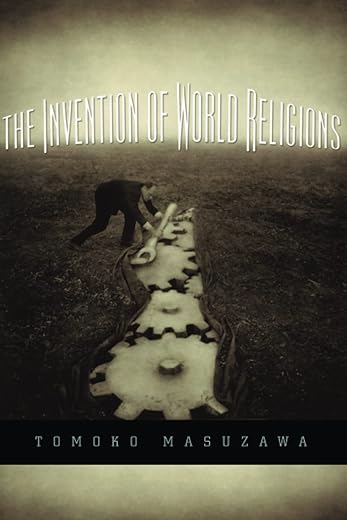
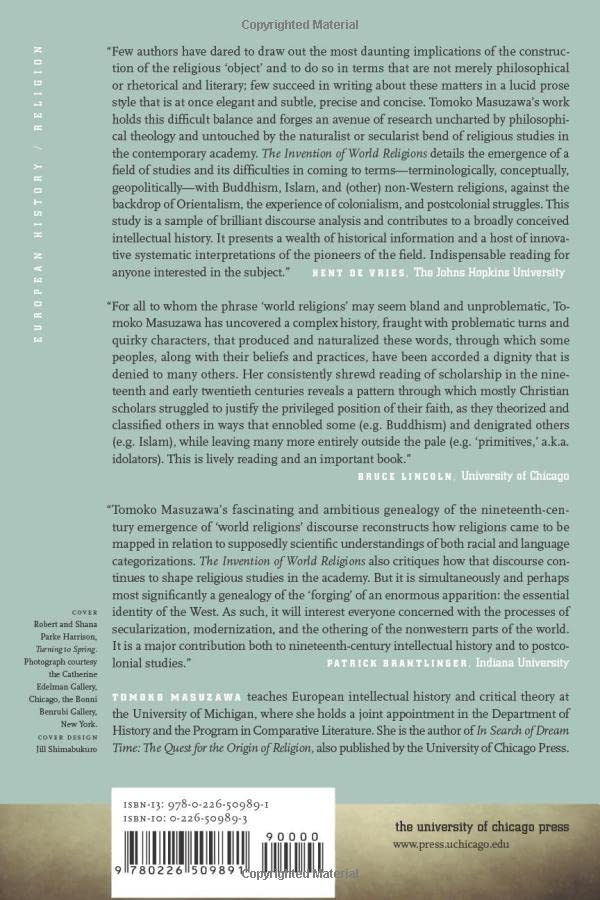
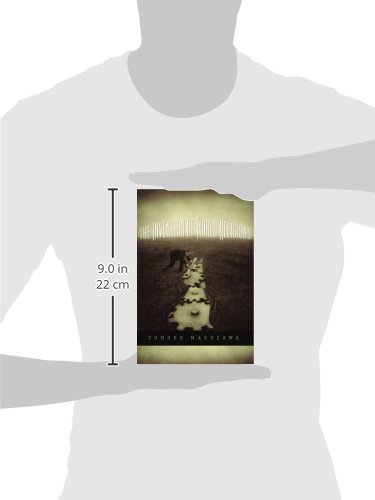
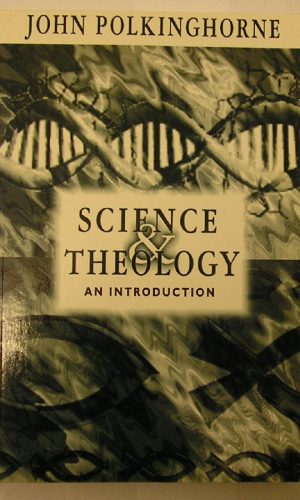
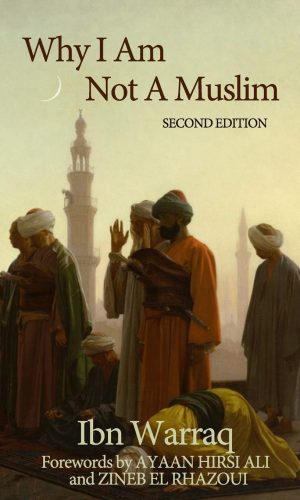
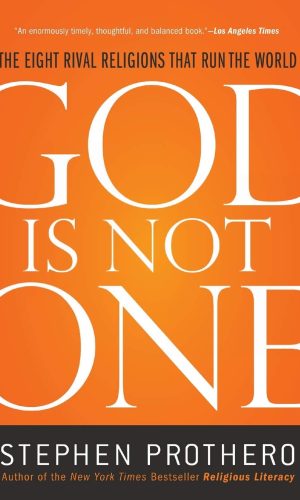
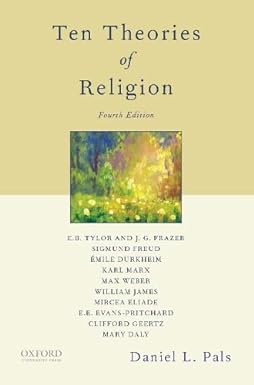
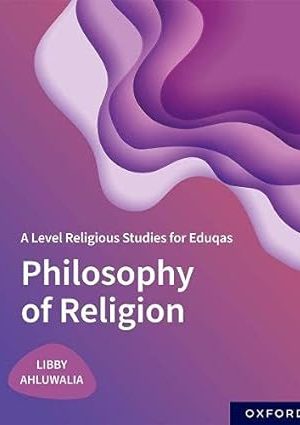
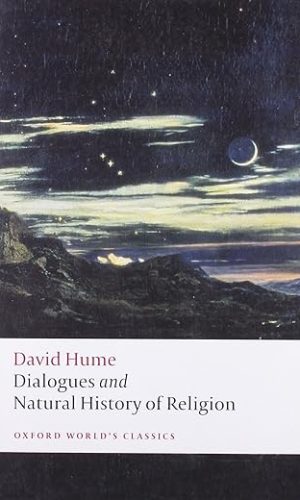
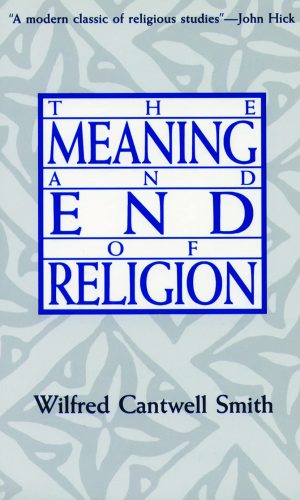
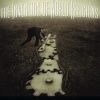
by Philo
Very Good Book
by Jim Harries
In the 19th Century and before, Christianity was assumed by Westerners to be the universal religion that underlay Europe’s universalist aspirations. By the 20th Century, that Christian universalism had been replaced by a list of 11 or so ‘world religions’. By the 20th Century, it appears, Europeans had got off their high hobby horse, and were acknowledging that ‘their’ Christian religion was only one of many religions. What happened to all that historical universalistic fervour, Masuzawa asks in her book?
The discourse on world religions grew so massive in the 20th Century that Masuzawa does not take us beyond it’s early decades. Yet, her references to the state of the art then, do not seem so different to the way in which issues are still presented today. Christianity and theology have taken a major thump, lost some of their audience, lost their universalist hegemony, lost much prestige. It is not Christianity but secularism that according to contemporary 20th Century logic brings peace and unity to our world. But yet mysteriously, following the loss of Christianity’s universalism, we now all know, it seems, that religion itself is universal. It is just that religion wears different clothes according to its locale. Hence we have different world ‘religions’.
Masuzawa leads us down a few historical trails to help us better understand the wider picture. There was something called ‘comparative theology’. This was a booming discipline in the 19th Century. Through it, numerous high quality scholars through great scholarly endeavours demonstrated the superiority of Christianity over everyone else’s theology. Then in the 20th Century those books were written off. For the last 100 years, no one has read them. The whole discipline has been condemned as biased, self-centred, triumphalist, egotistic and just poor grossly unscientific claptrap. Yet, Masuzawa asks; can things be so simple?
Another not-irrelevant rabbit trail Masuzawa takes us on, is an exploration of philology, on the basis of which it was decided that Semitic languages (and, subsequently also Semitic peoples) were inferior to Aryans (Europeans, and many Asians). By the time the philological (linguistic) arguments for such Aryan superiority were discredited, the notion of Aryan superiority was already so deeply ingrained, that Aryans were assumed universally superior. From the universal superiority of Christianity, we moved to the universal superiority of the Aryan race. Such should give us pause for thought.
There are reasons ‘religions’ were selected for inclusion in the ‘world religions’ list. Historically contingent reasons have subsequently been forgotten. The list of 11 or so ‘world religions’ appeared in the 20th Century as if fully grown. The same list remains authoritative today. Where did the list come from and how was it put together? Masuzawa tells us. As the list emerged, so did historicity; a new perspective claiming the present to be contingent on ‘accidents’ of prior eras. This was apparently the nail in the coffin for Christian universalists; they were forced to acknowledge Christianity as being as much a product of history as anyone else’s ‘religion’.
There is something here being concealed. So, not everyone is Christian, but everyone (the world over, through all history) is now assumed to have (or to have had) ‘religion’. What is this newly universal thing ‘religion’? The contemporary widely held assumption of the universality of ‘religion’ needs, according to Masuzawa, some attention. ‘Religion’ used to be about what people did; how come it has been transformed to a quality somehow conjured “up out of thin air … a unique sphere of life” (313)? When examined closely, ‘religion’ always seems to approximate to the very same Western Protestant Christianity whose universalistic aspirations were so abruptly curtailed. Are contemporary people right to assume that all people everywhere have ‘religion’ that just takes various different shapes and sizes? Not at all, says Masuzawa.
From 19th Century efforts at sharing the Gospel with all and sundry, we have moved into a 20th Century when religion (i.e. Western Protestant Christianity, i.e. the Gospel) is assumed already to have been appropriated by all and sundry. Hence Europe managed, in a move that appears to demonstrate great humility, to conceal its universalistic aspirations under a cover of ‘world religions’. The ‘discovery’ of world religions was a process of Western Protestantism being, sometimes almost by default, transposed onto other people’s ways of life. (This is the origin of secularism, as without ‘religion’ one cannot have ‘secularism’.) World religions have been reified by processing them through Western theological screens, Masuzawa tells us! Thus they are inventions, exotically shaped versions of Western Protestant Christianity, designed to combine being exotic with being palatable to Europeans.
Masuzawa makes her historic case at great length and with great diligence. Her book ends with an enigma; what does all this mean? It means that Europe’s global Christianisation project continues apace but under wraps. As under wraps, it is not fronted as ‘Christianity’, but as ‘secularism’ (on the assumption that the other things it meets are ‘religions’, i.e. that they resemble Western Protestant Christianity). As a result, outside of the Christian West, religion remains a mystery, unknown. Others might have been able to comprehend that mystery had they had access to the Gospel known by Europeans; but that is now hidden from them. Instead we get a globe with apparently many autonomous centres of religious and secular activity that remain in actuality tied to the apron strings of a self-denying (with a false humility) Mother-Christian-faith, now concealed, in Europe.
by Rana
A hugely insightful book on the formation of “World Religions”, through the imagination of the West.